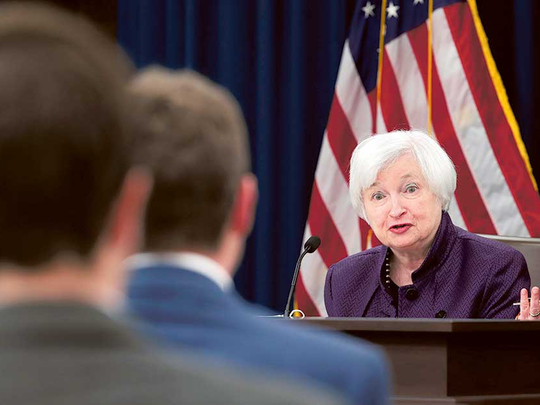
Singapore: Pacific Investment Management Co, which runs the world’s biggest actively managed bond fund, says it’s time to reduce risk.
“We continue to stress more defensive themes in portfolio construction,” Scott Mather, chief investment officer for core strategies at the Newport Beach, California-based company, wrote in an email. Pimco is “focused on selective opportunities in mortgages, inflation-linked bonds, and select credit markets,” he wrote.
Pimco said earlier this week the Federal Reserve may raise interest rates two or three times by the end of 2017. The minutes of the central bank’s most recent meeting published Wednesday showed several policymakers indicated it would be appropriate to move “relatively soon.”
The Pimco Total Return Fund’s $84.4 billion (Dh309.7 billion) in assets make it the world’s biggest actively run bond mutual fund, based on data compiled by Bloomberg. It has returned 4.5 per cent this year, lagging behind about three-quarters of its peers, the data how. Over five years, it beat almost 80 per cent of its competitors.
Total Return increased holdings of mortgage bonds to 55 per cent of assets in September from 49 per cent in August, Pimco reported on its website Wednesday. US government and related holdings were little changed at about 45 per cent. The government and related category can include investments such as inflation-protected bonds, futures contracts and agency debt, according to Pimco.
Data
Treasuries rose for the first time in three days on Thursday, with the benchmark 10-year note yield dropping three basis points to 1.74 per cent as of 7:10am in London, according to Bloomberg Bond Trader data. The price of the 1.5 per cent security due in August 2026 climbed 1/4 or $2.50 per $1,000 face amount, to 97 26/32.
A transition in monetary policy in Japan and Europe may push long-term bond yields up versus their shorter counterparts around the world, said Kei Katayama, a bond manager at Daiwa SB Investments, which oversees $52 billion. The Bank of Japan’s plan to control yields is a shift from its previous policy of trying to push them down, he said. The European Central Bank may follow a similar path, Katayama said.
The difference between two- and 30-year Treasury yields was 163 basis points, up from 140 basis points in August, which was the narrowest since January 2008. The US is scheduled to sell $12 billion of 30-year bonds Thursday.
“Global yield-curve steepening is the main focus, including the US,” Katayama said. “We are not so bullish on Treasuries.”












